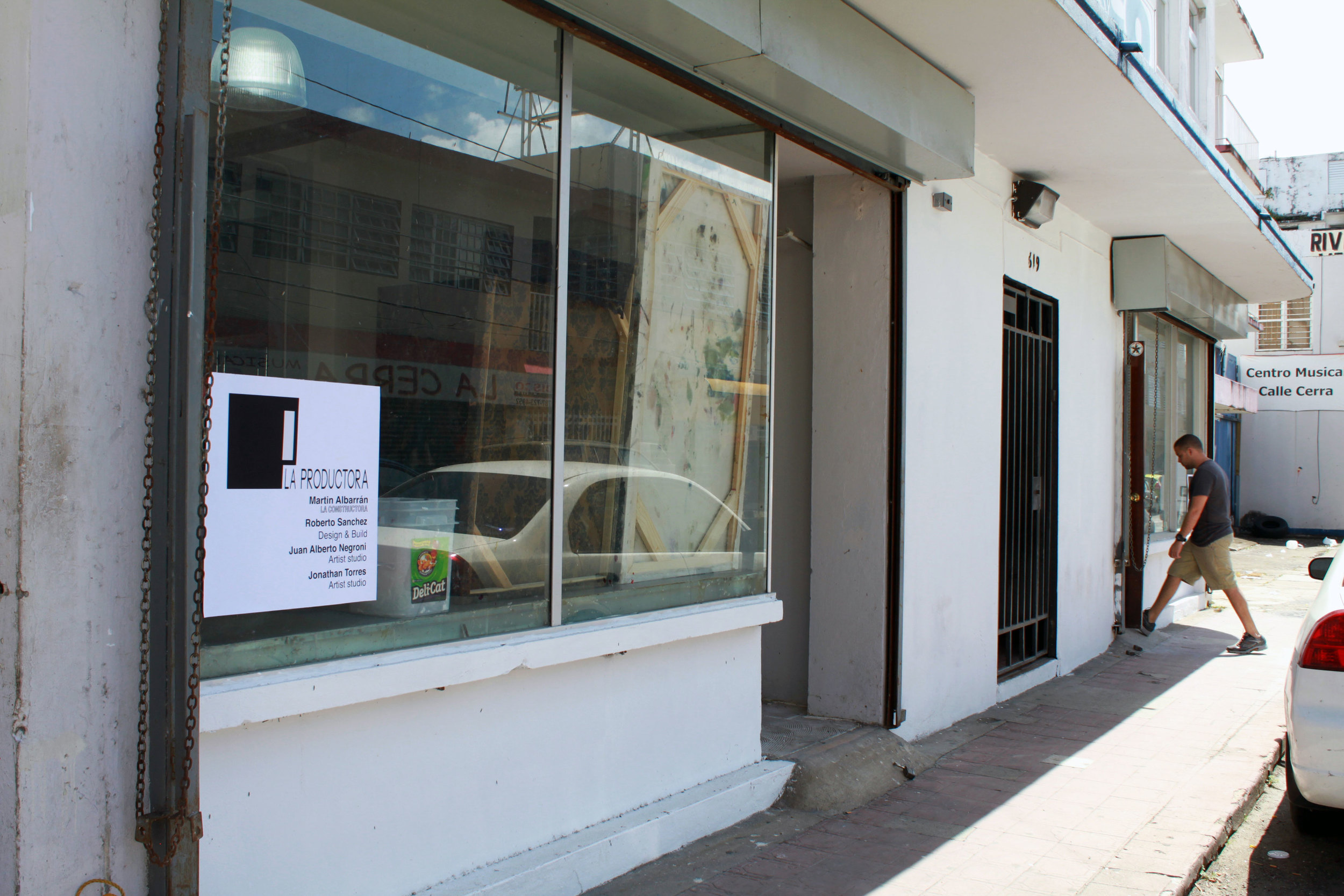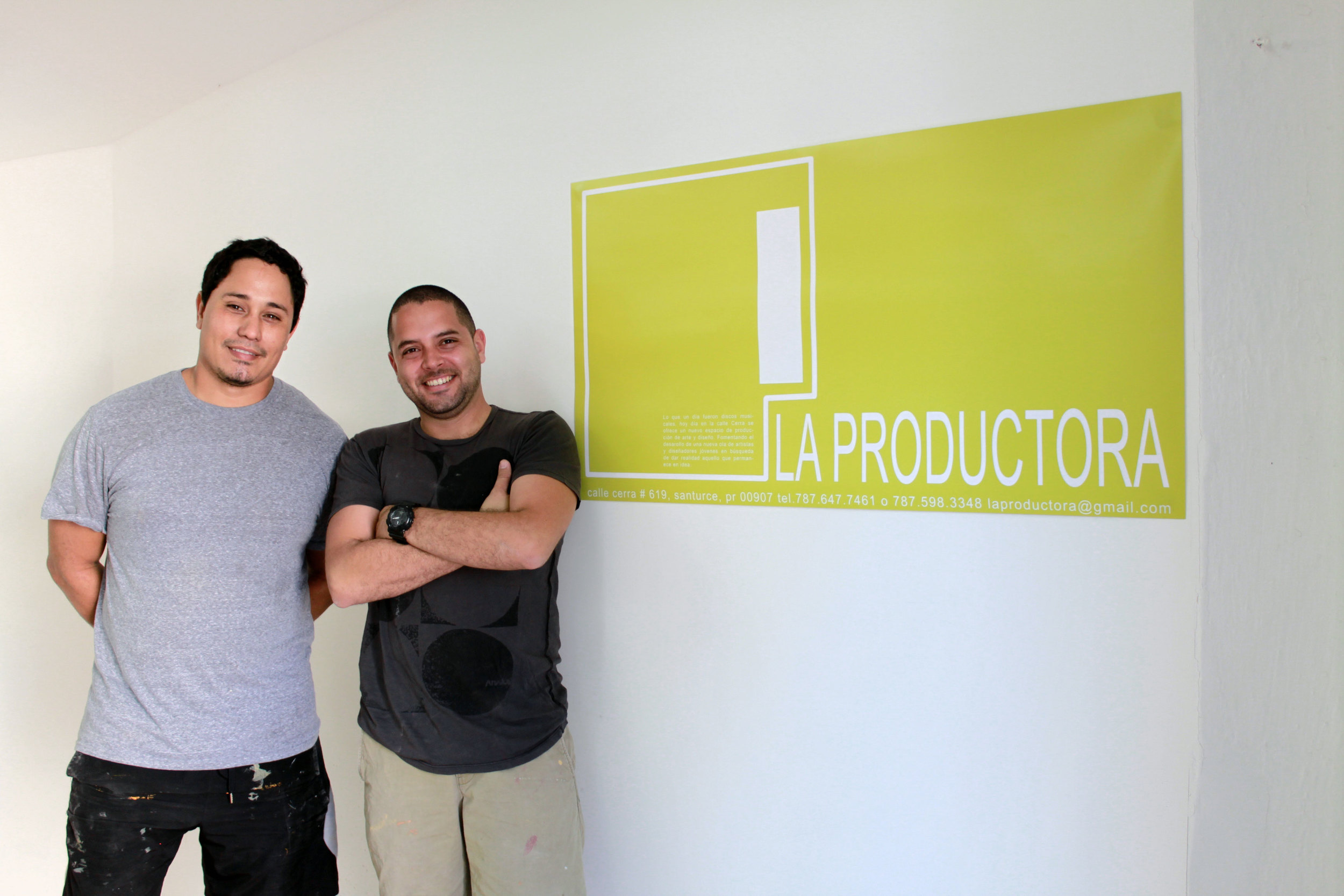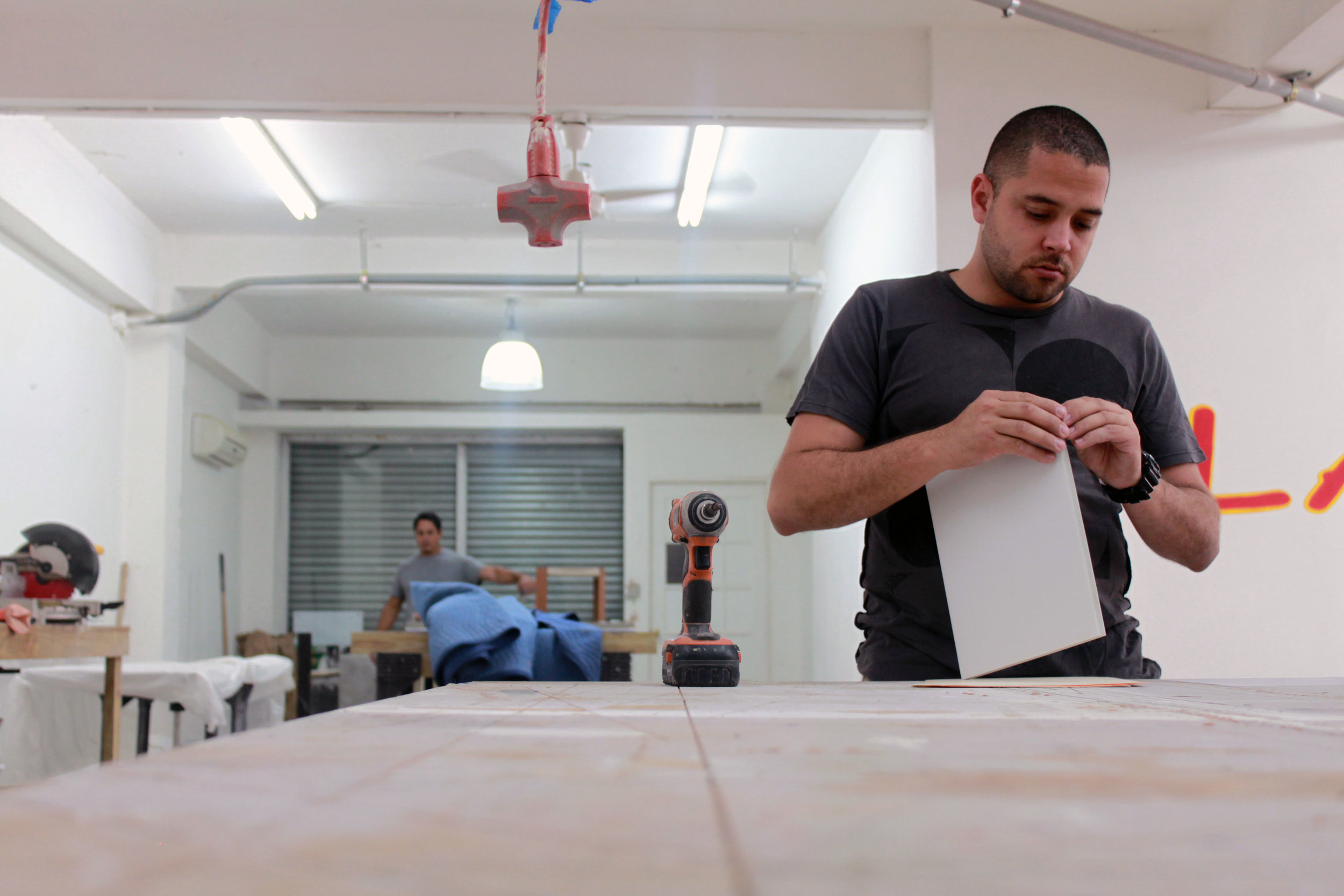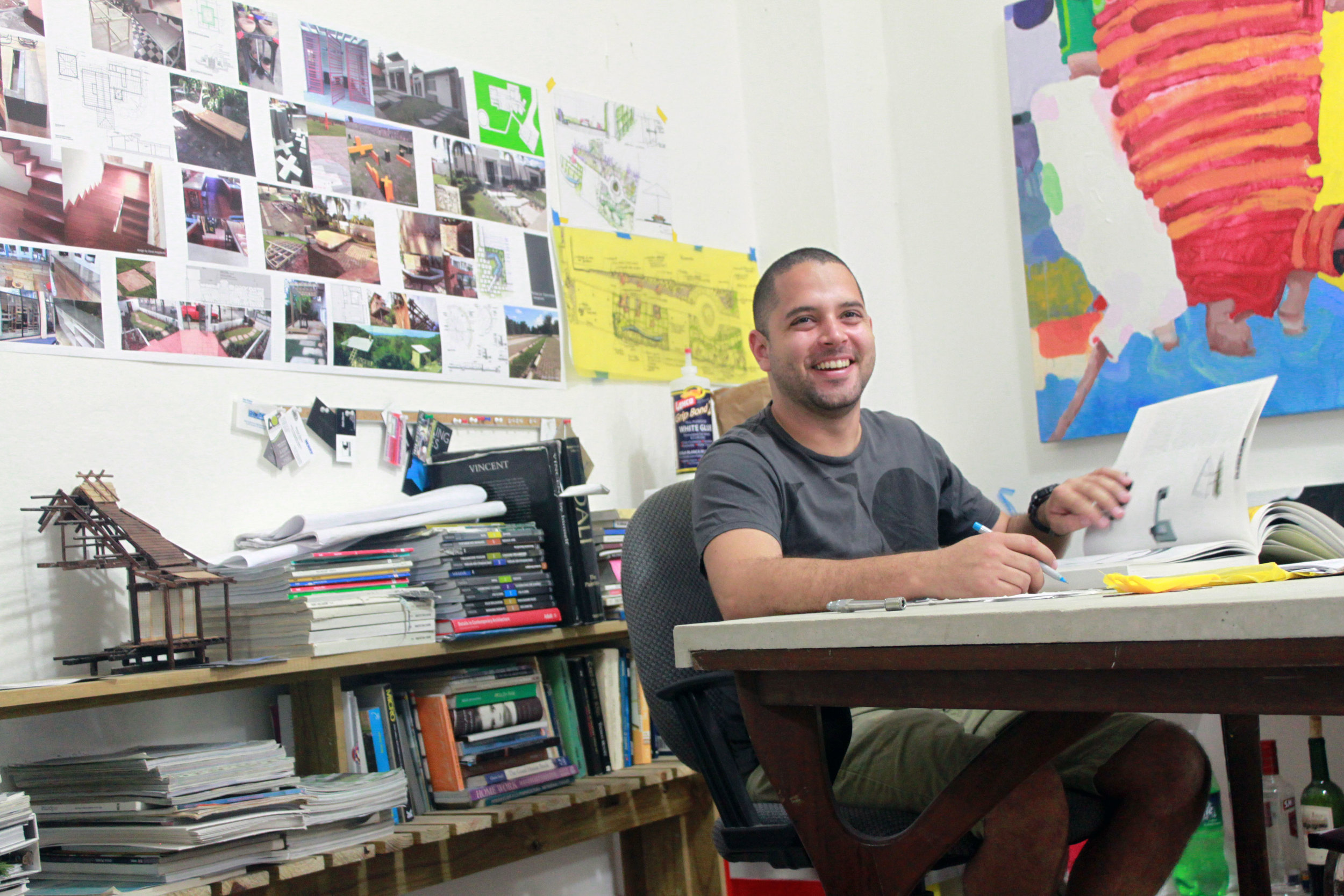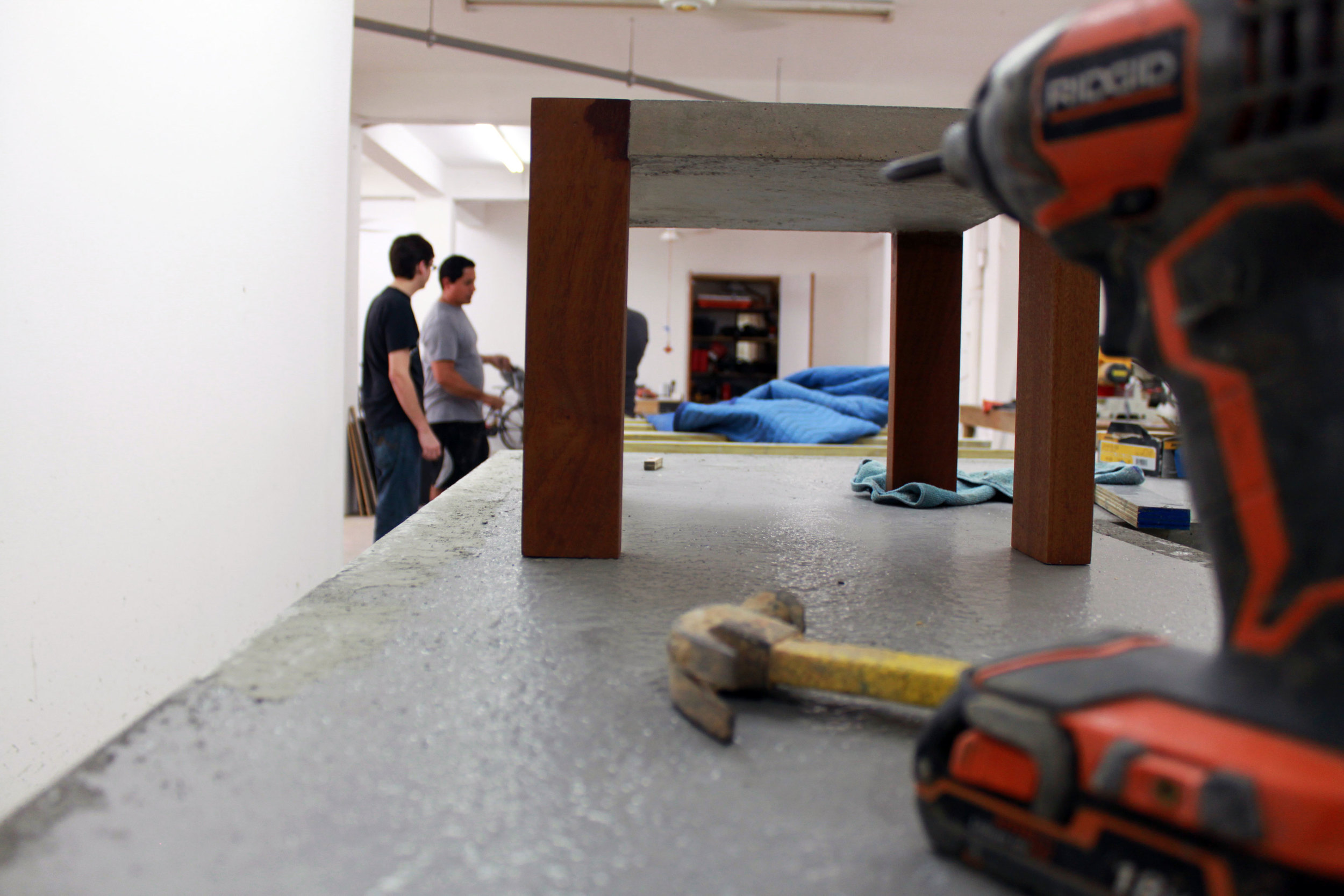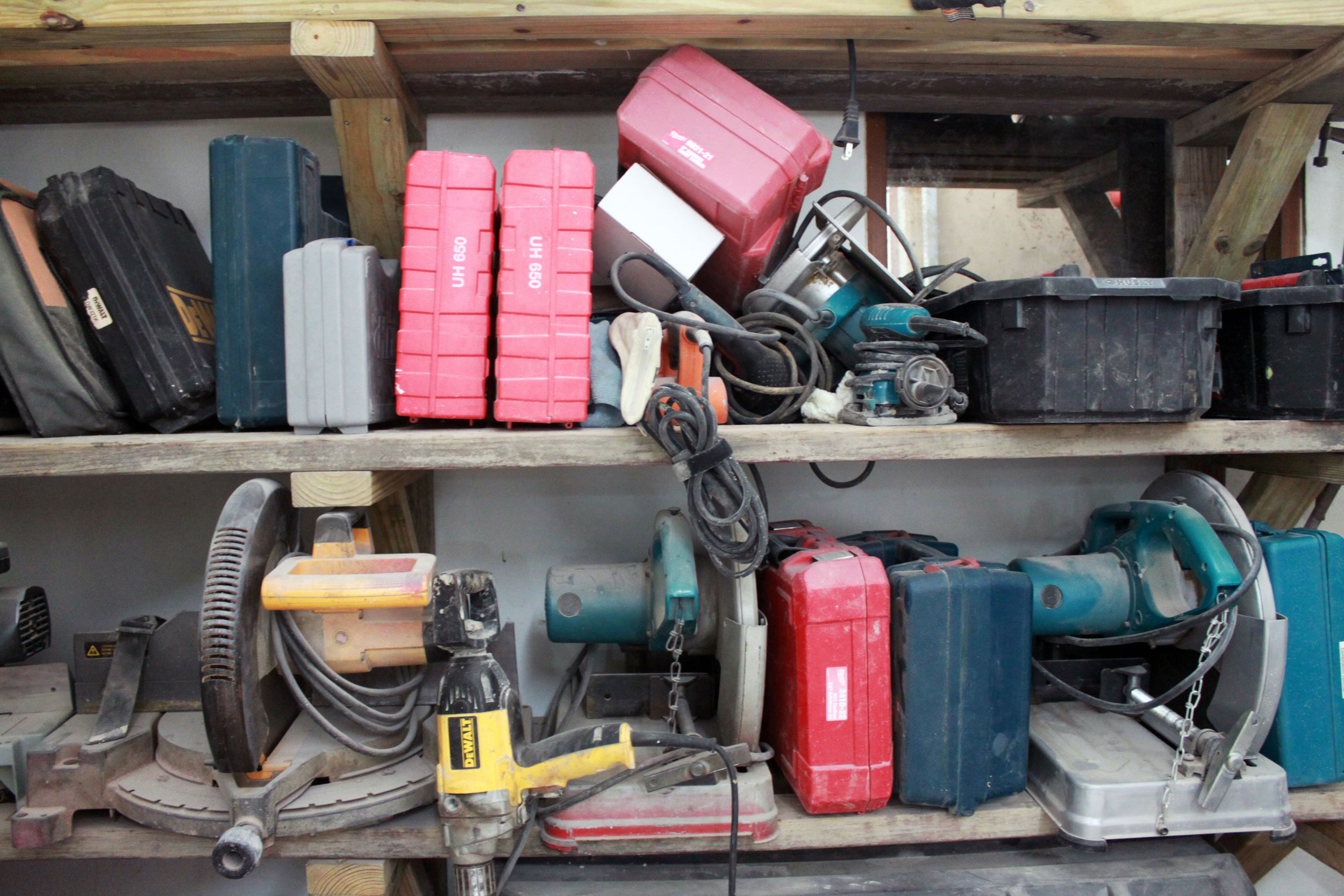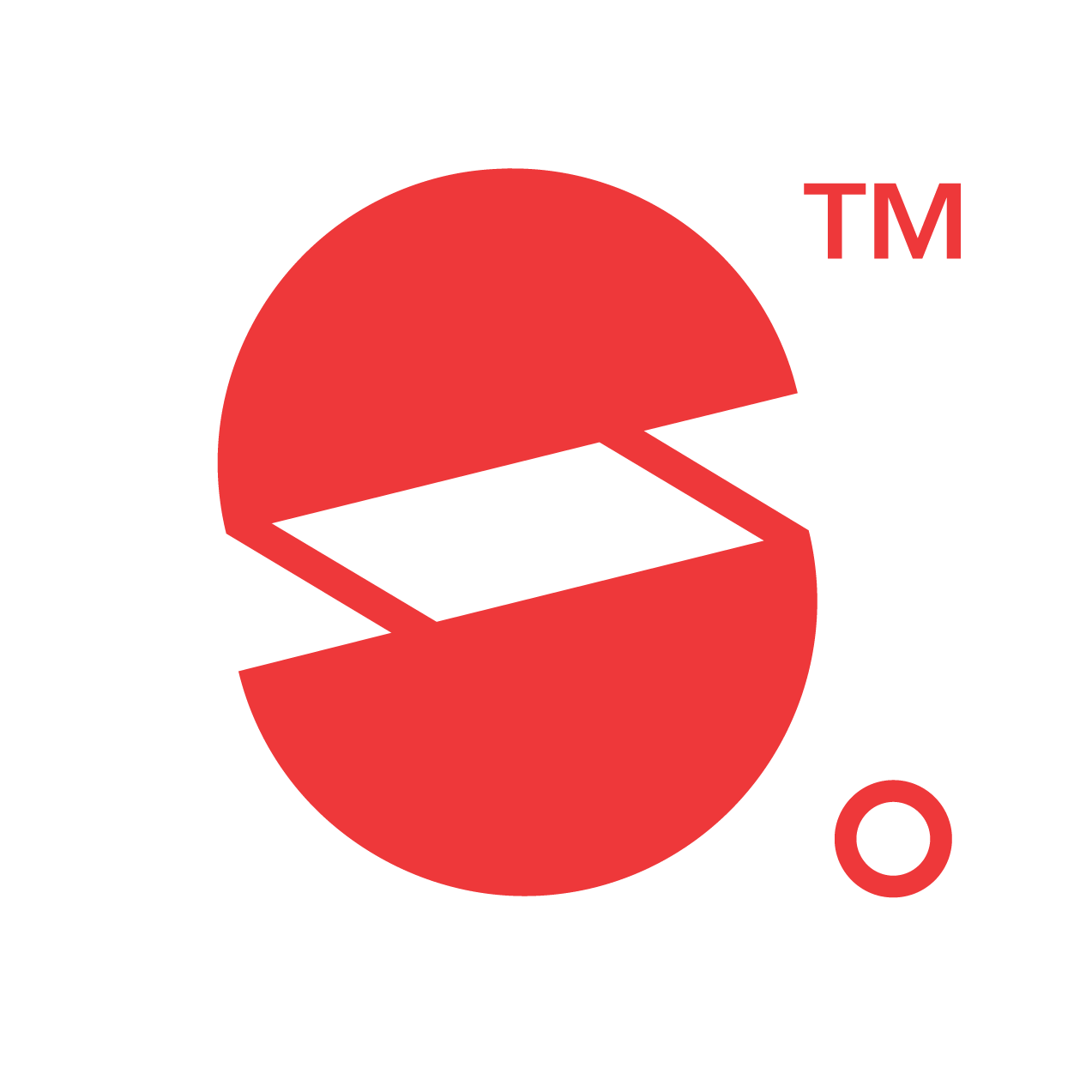Photos by Rebecca Díaz-Atienza
Meet Martín Albarrán! Martín Albarrán is an artist based in San Juan, Puerto Rico. His preparation in the art and design worlds ranges from sculpture, restoration and architecture. Martín has been educated in art since high school at the Escuela Central de Artes Visuales in San Juan, PR and later received a bachelor in fine arts with concentration in sculpture from the Escuela de Artes Plásticas de San Juan. He became a sculpture professor at a the same school, and later spent four years at a restoration workshop working with crafts and antique furniture. Alongside artist Filipo Tirado he had a workshop at Santurce for the production of sculptures. From 2007 to 2010 he started coursework in architecture at the graduate program of the School of Architecture at the University of Puerto Rico.
It was during an academic exchange at Barcelona, where he became involved in digital design and contemporary architecture history, that his vision about spaces transformed from space for exhibition to places for creation. From this vision, La Productora, his latest endeavor into art entrepreneurship emerges. La Productora is not only a space for producing art, it is as Martín describes it: “a space for producing culture; a space to revitalize and echo the constant movement in the Cerra street at Santurce”.
Our collaborator and artist Fortunato-Velázquez, sat down with Martín at La Productora to chat about his experiences and undertaking as an art entrepreneur.
You describe La Productora as an “alternative space where art and design converge”. Where did the idea of creating an alternative space for contemporary art emerge?
The idea comes from Cart Watch, a previous production and exhibition space which is the inspiration for developing this second project. The space had a good reception by the artists, which were motivated to produce for the space. There were times when the artists wanted to show work and they presented the idea of an exhibition to my partner and me. Initially we came to the space with the idea of a studio for fabrication of any kind of objects. With time, alongside sculptor Jaime Rodríguez, we realized its possibilities for developing a space for artistic production and exhibition. We explored what to do with the space, what message we wanted to express and what type of audience to bring.
After that project I was left wanting a space that would more closely approach the professional side of art. With this new space, we want to bring artists with some kind of experience or those who are working with an established perspective, but who don’t have a space or support from a particular space. My goal is to give the space an ample promotion, not only to create a hangout place like it occurred in my previous project, but also change the perception of the interior space so that art stands out.
At La Productora we want to have resident artists that will work on their pieces, whether it be for an exhibition in the space or another gallery. The space provides the artist with individual space without having the problem of having to stop production because of an exhibition that is up, as well as the necessary equipment for every type of job. Another thing I wanted to address in this space is the idea of including as part of the production other professionals that would take advantage of the opportunity of collaborating. In that case, have a multidisciplinary studio so that space would open and be malleable in terms of uses and users.
How do you identify yourself with autonomous management? What is the role for starting this enterprise?
I coordinate everything that is going on in the space, and Roberto is more concerned with his work as a designer. I look for contacts and establish the networks. I look for the artists and the curators, so I don’t always have the role of curator and instead the vision of the space varies and expands with exhibitions that have not made it to museums or galleries. We want to provoke that the artists that already have a trajectory bring in proposals for exhibits. I want the artist to bring in ideas and to market those ideas, with a concept that holds the work sample as a whole. I want the artist to bring me the undertone of his/her process, for me to be able to understand it and be able to emphasize the importance of the work beyond the aesthetics.
What is the differentiation of this space in comparison with other spaces that are emerging in the contemporary art scene?
Other spaces are more formal; they have scholarships and monetary support. We are based in autonomous management, and whatever money we receive is invested back to the space. In this aspect, La Productora is less formal; we don’t interview the artist to be able to produce here. We do have criteria for selection, but at the same time we are very flexible so that the artist who is looking for an alternative space for creation can actually develop. We would like to achieve a point were we could bring lectures and international artists. I hope we can do it at some point so that the space can transcend. I would like to start seeing here what is being created outside the Island.
Do you think there has been a transformation of the mentality about art? In that case, does the space emerge as a response to it or critique about the absence of it?
I think the situation in the Island is difficult. In Cart Watch the audience was fairly diverse. Visitors ranged from professors, students, artists, curators and others. We have somewhat changed the dynamics of the traditional galleries that established very specific parameters in terms of uses and opportunities. Something interesting that occurred in Cart Watch was the opportunity the space had for taking art out of the Island to an exhibition at New York. The idea is also to take art out of La Productora, with a selection of artists to visit other countries. I think we have changed the collector's way of thinking. All these spaces have gotten together to rethink new paradigms and spaces for art in the Island.
What is your vision for the development of the project in short term and long term? What situations in the future would enable the project to go forward?
I want more artists to come to the studio spaces and that those artists stay as residents in the space. Maybe create some type of critique cycles were we could bring people from the exterior and include them in the creative process, which at the same time would enrich the studio experience with other perspectives. I want to establish an itinerary and keep bringing to the space quality work; maybe create a lecture cycle. It is not about creating exhibitions just because; it's about maintaining a sequence from an artistic logic. I want the space to become a residency for artists. At the same time I want to have the opportunity to take the work and artists to the exterior.
